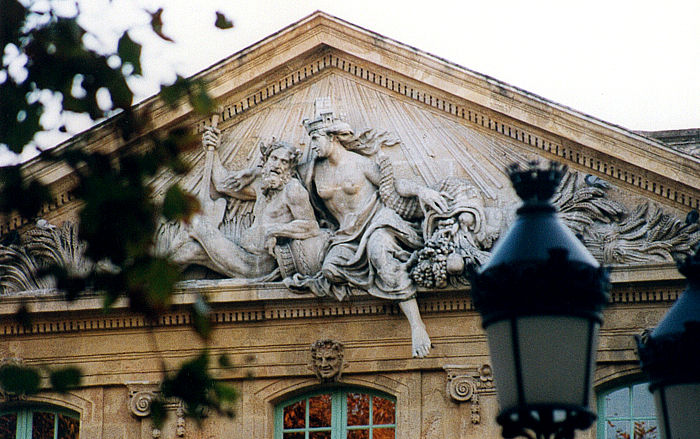 Following
the French revolution, Aix, its ancient capital, was demoted to the
rank of sub-prefecture in the newly created department of "les
Bouches du Rhône". Aix’s eclipse was immediate and
lasting, its swagger and pride lamed by a preferment accorded to
Marseille, its bustling
neighbour to the south. For over an hundred and fifty years the population
of Aix dwindled ; from capital of an important region Aix became
a modest market town, home to an ancient university and to the law
courts,
a
distant echo of the court and parliament that once reigned over a
large province. Following
the French revolution, Aix, its ancient capital, was demoted to the
rank of sub-prefecture in the newly created department of "les
Bouches du Rhône". Aix’s eclipse was immediate and
lasting, its swagger and pride lamed by a preferment accorded to
Marseille, its bustling
neighbour to the south. For over an hundred and fifty years the population
of Aix dwindled ; from capital of an important region Aix became
a modest market town, home to an ancient university and to the law
courts,
a
distant echo of the court and parliament that once reigned over a
large province.
 "Modern"
Aix dates from the post 1939 - 1945 era. Expansion came with the construction
of a new university to the south of town, the International
Music Festival (1948), the Institute for Foreign Students, all contributing to its international
renown. The local population grew from 30,000 in 1930 to 70,000 in 1959,
just before the arrival of thousands of displaced persons from North Africa.
Buildings sprouted along the roads leading into town, and Aix became, at
the same time, a dormitory for Marseille and the industrial complexes implanted
around the Etang de Berre to the south, the atomic research centre at Cadarache
to the north, and more recently the hi-tech zone of Rousset on the road
to Nice. "Modern"
Aix dates from the post 1939 - 1945 era. Expansion came with the construction
of a new university to the south of town, the International
Music Festival (1948), the Institute for Foreign Students, all contributing to its international
renown. The local population grew from 30,000 in 1930 to 70,000 in 1959,
just before the arrival of thousands of displaced persons from North Africa.
Buildings sprouted along the roads leading into town, and Aix became, at
the same time, a dormitory for Marseille and the industrial complexes implanted
around the Etang de Berre to the south, the atomic research centre at Cadarache
to the north, and more recently the hi-tech zone of Rousset on the road
to Nice.
 As
a base camp for exploring the region of Aix with its over forty hotels
offering accomodation at all prices is increasingly an ideal place to start.
At least two days are needed for exploring the city and its immediate surrounds.
History, climate, land, and water, art and architecture are a banquet for
body and soul. Those who come once, come back and bringing their families
along ! As
a base camp for exploring the region of Aix with its over forty hotels
offering accomodation at all prices is increasingly an ideal place to start.
At least two days are needed for exploring the city and its immediate surrounds.
History, climate, land, and water, art and architecture are a banquet for
body and soul. Those who come once, come back and bringing their families
along ! |





